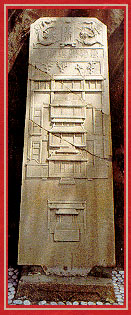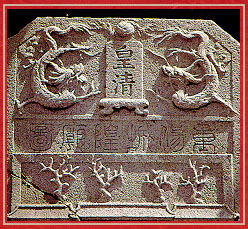


Address/212 Mintsu Rd., Central District, Tainan City
Construction Date/1653
Fort Provintia, constructed by the Dutch during the period of their rule over Taiwan, was built just opposite Fort Zeelandia; the two structures face each other over a distance of a few kilometers. While Fort Zeelandia was the central administrative building for the governor of the island, Fort Provintia was an office building for officials in charge of commerce and executive administration. The construction of the latter fort was undertaken by using bricks mortared with a mixture of sugar-water, glutinous-rice paste, and powder of ground clam-shells; the result, surprisingly enough, was a wall of rock-like strength. Its circumference extends to some 450 feet. At the north and south ends are watchtowers, each over thirty-six feet in height, popularly known as the Redhaired(i.e., the Dutch) Towers. In 1661, after Cheng Ch'eng-kung regained the rule of Taiwan by driving out the foreign invaders, he changed the name of the fort to Ch'eng-t'ien-fu, signifying that it sustained the true holder of the Mandate of Heaven-the Ming Dynasty. Subsequently, the fort was used as a gunpowder magazine. In 1720, during the military campaign of Chu 1-kuan, the fort was ravaged in the war; in the following years, successive earthquakes toppled over what was left of the rooms and chambers, leaving only the enclosure wall standing. During the Ch'ien-lung period(1736-1796), the county magistrate Lu Ting-mei built the county government office at the right side of the ruins, which then became an attraction for sightseers. In 1879, the county magistrate P'an Ch'ing-ch'en had the Wen-ch'ang Hall and Hai-shen Temple built on the site. During the period of Japanese occupation, these buildings were renovated and used as a historical museum. After the retrocession of Taiwan in 1949, the buildings ware again renovated, but regrettably the work was carried out in a slipshod fashion, so that the original appearance of the site was irrevocably lost. Today, the entrance gate is nearly all that remains of what the Dutch built; but these few relics of a remote past still provide a stirring sight for visitors. ¡C


The Tortoise Stelas, nine in number, were moved to the inner side of Tainan's Ta-nan Men (a gate outside the city) during the Japanese occupation period; there they were arranged in a semi-circle, as seen in this photograph. Each stela is approximagely three feet wide and more than ten feet long. ¡C

Plan illustrating relationship between present structure and original layout of the fort, shown in dotted lines-

